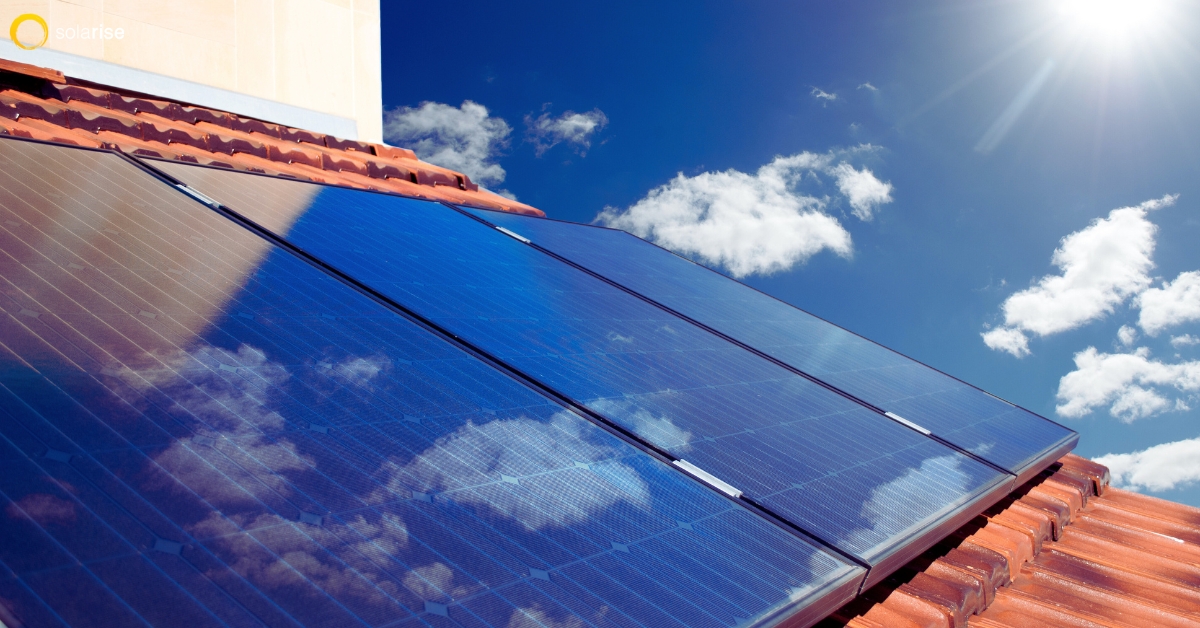Of course, extracting fossil fuels is damaging to the environment, and it’s very expensive for consumers. Solar energy is an environmentally healthy and free alternative. So, it’s not surprising that states and cities throughout the country are in the process of converting to solar along with other renewable resources. Many have set a goal of completing the transition to renewable energy by 2050, with solar featuring prominently in their strategies.
The U.S. Department of Energy has published its Solar Futures Study, which lays out potential strategies in which solar can help in developing a nationwide zero-carbon power grid by 2035. Of course, that may be decades away and will require up to nearly 6 million acres of land.
But, in the meantime, residential solar panel systems are making a spectacular contribution to air pollution control and the reduction of fossil fuel pollution more broadly. In the U.S. and throughout the world, the rate of solar adoption is growing ever more rapidly.
Positive Environmental Impact of Solar Energy
Using solar power instead of fossil fuels to generate electricity at home can contribute significantly to reducing greenhouse gas emissions, especially carbon dioxide (CO2). Greenhouse gases are generated when fossil fuels are burned. These emissions cause global air temperatures to rise, and that leads to climate change.
Climate change has already caused severe environmental and public health problems and is on track toward catastrophic outcomes in future decades — unless enough people intervene.
When you go solar at your home, you reduce the consumer demand for fossil fuels. That helps cut greenhouse gas emissions, and it reduces your carbon footprint. Every home with a solar panel system makes a measurable impact for the benefit of the environment.
How Much Pollution Does Solar Panel Manufacturing Cause?
Solar panels, no matter how large or how many are on a site, and solar power plants do not generate greenhouse gasses or air pollution while they’re operating. Manufacturing solar panels and other solar energy systems equipment does involve its own pollution. But, using solar energy reduces the use of nonrenewable energy types that generate much larger negative impacts on the environment over much longer periods of time.
By contrast with fossil fuels, the long term effects of solar energy pollution are negligible. Still, understanding the downside of solar energy makes the overall benefits to the environment clearer. Examples of adverse environmental effects from solar panel manufacturing, based on solar panel life span environmental impact analyses, can include these:
- Heavy metals and/or hazardous chemicals are used in manufacturing photovoltaic (PV) cells and panels. These must be managed at the end of the equipment’s useful life.
- Some systems of solar thermal energy utilize potentially harmful fluids for heat transfer. Potential leaks could cause environmental damage. But, the U.S. Department of Energy supports the recovery and recycling of these materials for the production of PV cells and panels.
- As with any power plant, clearing land and locating a solar power plant on it may have a long-term impact on the plants and animals losing habitat in that area. On the other hand, locating solar energy production facilities in areas with limited agricultural value or integrating solar energy systems into farms yields excellent economic and environmental advantages for farmers.
- Surface or groundwater may be used for cleaning the collectors in solar power plants located in some very dry regions. That can potentially impact the ecosystems in areas that rely on those water resources.
- The concentrated sunlight beam created by the solar tower of a power plant can kill insects and birds that fly into that light stream.
Overall Environmental Benefits of Solar Energy Production
The National Renewable Energy Laboratory (NREL) has produced a research report finding that the widespread conversion to solar energy generation significantly reduces sulfur dioxide, nitrous oxides, and particulate pollutant emissions. All of these are serious health hazards.
NREL’s report further asserts that using solar power leads to a reduced number of cases of respiratory and cardiovascular problems, including chronic bronchitis. It reduces the number of workdays lost due to health-related problems and offers many other human health benefits.
Overall, opting to use a clean energy source like residential solar panels, you can cut the amount of environmentally harmful carbon emissions from burning more than 5,000 pounds of coal per year! That’s a substantial environmental impact for a family to achieve. So, collectively, homeowners have the power to make a transformational global change when enough people go solar.
Solarise Solar
Your Solarise solar energy expert will calculate the amount of energy your residential panels will generate and how much energy cost and fossil fuel use you can save by switching to solar.






